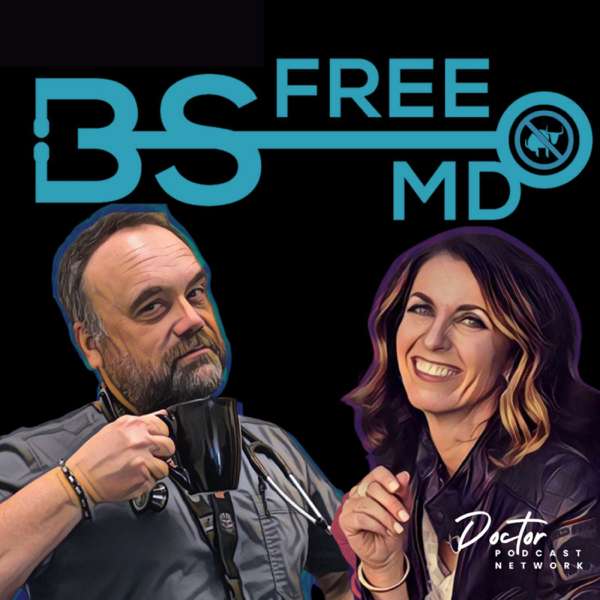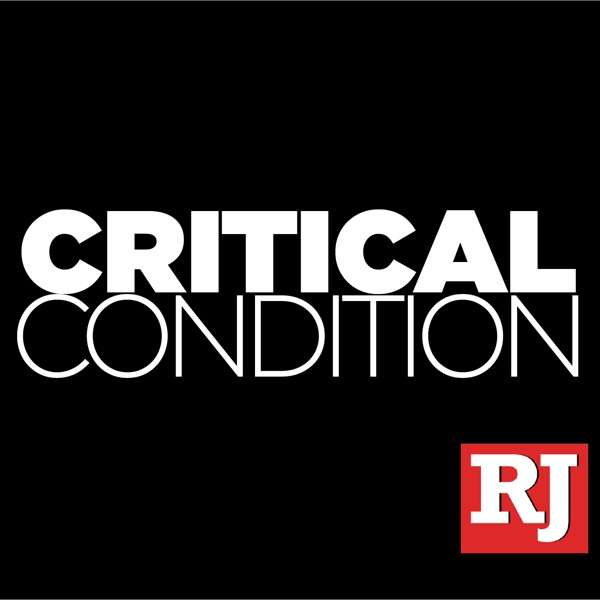A VIDEO RECORDING OF THIS INTERVIEW IS AVAILABLE HERE.
Interim results on overall survival in phase 3 of the IMpower010 trial were presented at this year’s meeting of the International Assosciation for the Study of Lung Cancer (IASLC). As part of the NEJM Group’s coverage of the conference, Christine Sadlowski interviewed the presenter, Dr. Enriqueta Felip. In a 15-minute interview, she discusses the implications for different patient groups and the past, present, and future of the IMpower trial, which tests adjuvant atezolizumab following platinum-based chemotherapy in patients with resected early-stage non–small-cell lung cancer.
INTERVIEW TRANSCRIPT:
Christine Sadlowski:
This is coverage of the IASLC’s 2022 World Conference on Lung Cancer. I’m Christine Sadlowski of the NEJM Group. With me today is Dr. Enriqueta Felip, who is head of the thoracic cancer unit at the Vall d’Hebron University Hospital, Vall d’Hebron Institute of Oncology in Barcelona, Spain. She is the presenting author for the overall survival interim analysis of IMpower010, which tested atezolizumab in patients with resected early stage non-small cell lung cancer following platinum-based chemotherapy.
Dr. Felip, thank you very much for joining me.
Dr. Enriqueta Felip:
Thank you. It’s a pleasure.
Christine Sadlowski:
So, last year I interviewed your colleague, Dr. Heather Wakelee, about the interim findings on progression-free survival from this same study. Can you briefly remind us what those findings were?
Dr. Enriqueta Felip:
So, IMpower010 is a randomized trial in patients with completely resected stage IB with a tumor size greater than four centimeters, II-IIIA according to the Seven TNM Classification, and patients received adjuvants, platinum-based chemotherapy, and then 1,000 patients were randomized to receive one year of atezolizumab or best supportive care. The primary endpoint in this trial was the disease-free survival, and the primary endpoint was presented by Dr. Wakelee during the ASCO last year and also published in Lancet.
So, in this trial, for those patients with stage II-IIIA and PD-L1-positive tumors, atezolizumab improved disease-free survival with a hazard ratio of 0.66. For those patients with stage II-IIIA, irrespective of PDL-1, disease-free survival was improved with a hazard ratio of 0.79, and in the whole group of patients, patients with a stage IB-IIIA, the hazard ratio for disease-free survival was 0.81, and the statistical significance boundary for disease-free survival was not met in this population.
So here, during the IASLC conference, we present the first prespecified interim analysis of overall survival and a safety analysis with a median follow-up of 45 months and with a clinical cutoff in April 2022. So, at this analysis with an event to patient ratio of 25% in the intention-to-treat population, the overall survival is not mature.
So, in this analysis, we presented the results of overall survival in this interim analysis for patients with stage II-IIIA and PD-L1-positive tumors. Overall, there is a trend towards an improvement in overall survival for those patients receiving atezolizumab. The median overall survival was not reached in either of the treatment arms. The hazard ratio was 0.71 with a 95% confidence interval between 0.49 to 1.03. So, at 60 months there is 76.8% of the patients alive in the atezolizumab arm, 67.5% of the patients in the control arm.
At this overall survival interim analysis, we observe no differences in overall survival when we analyze all randomized stage II-IIIA population, irrespective of PD-L1, with a hazard ratio of 0.95, and also no differences in overall survival was observed in an intention-to-treat population, including patients with a stage IB disease, with a hazard ratio of 0.995.
And also, we analyzed the overall survival in patients with stage II-IIIA based on PD-L1. So, as I mentioned, for those patients with PD-L1-positive tumors, there is a nonsignificant trend in favor of atezolizumab with a hazard ratio of 0.71. For those patients with PD-L1-negative tumors, the hazard ratio is 1.36, and for those patients with PD-L1 50% or higher, the hazard ratio for overall survival is 0.43. We analyzed also the hazard ratio for those patients with PD-L1 between 1-49%, that is 0.95. So, it’s important that for those patients with PD-L1 50% or higher, when we exclude those patients with EGFR and ALK, the hazard ratio for overall survival is 0.42, the median overall survival was not reached in both treatment arms, and at five years, there are 84% of the patients in the atezolizumab arm, 67% in the control arm.
I think it’s also important that we have updated the safety profile in this new data cutoff. Overall, the safety profile was consistent with the previous analysis and no new safety signals were seen.
So, what we have seen in this presentation is that we have observed an overall survival trend in favor of atezolizumab in those patients with stage II-IIIA and PD-L1-positive tumors. The hazard ratio is 0.71, 91% confidence interval between 0.49-1.03. For those patients with PD-L1 50% or higher and a stage II-IIIA, the overall survival hazard ratio is 0.43. After additional follow-up, the safety profile remains the same, no unexpected safety signals, and we will continue to the final disease-free survival analysis, and also with further overall survival follow-up.
Christine Sadlowski:
What is the distinction between the patients with PD-L1 1% or greater versus those with 50% or greater? I understand the drug has actually been approved through those two different populations. In the United States and some other countries, it’s approved for those with 1% or greater versus Europe, it’s 50% or greater. Why the difference?
Dr. Enriqueta Felip:
Yeah. The approval of atezolizumab in the adjuvant setting was based on the disease-free survival, published and presented at ASCO. As you mentioned, there are two different approvals. In the United States, the approval is in patients with PD-L1-postive stage II-IIIA, and in Europe, it’s for those patients with stage II-IIIA, PD-L1 50% or higher, excluding those patients with EGFR and ALK.
We have seen that the hazard ratio is different in the two populations, but it’s true that when we presented the prior results, the analysis in patients with PD-L1 between 1-49% was exploratory, so this was not the main endpoint of the trial. So, the trial was hierarchically designed, one, first for patients with stage II-IIIA and PD-L1-positive tumors, then for patients with stage II-IIIA, and if positive, in patients with stage IB-IIIA. The disease-free survival in patients with PD-L1 50% or higher is a secondary endpoint, but the analysis in patients with PD-L1 between 1-49% was a post hoc analysis.
Christine Sadlowski:
So, what is the implication here for those two different populations?
Dr. Enriqueta Felip:
I think this is the first time in the adjuvant setting, this was the first study with results. We have also now the KEYNOTE-091, presented also in ESMO Plenary, showing that adjuvant immunotherapy improves disease-free survival in patients with completely resected and stage II-IIIA.
In my opinion, the results are clear for patients with PD-L1 50% or higher, but even for those patients with PD-L1 between 1-49%, we cannot exclude a benefit. So, as I mentioned, this is a post hoc analysis, so probably we need to individualize the treatment in this group of patients with stage II-IIIA and PD-L1 between 1-49%.
What we have seen in the cohort is no benefit of adjuvant immunotherapy for those patients with PD-L1-negative tumors.
Christine Sadlowski:
So, what is the timing for the remainder of this overall survival analysis?
Dr. Enriqueta Felip:
Yeah. So, during this meeting, we have updated the overall survival as prespecified in the first interim analysis. There are remaining other analyses of overall survival in the future, and we have not updated the disease-free survival. So, this is important, there are not enough events for the final disease-free survival analysis, and we calculate that we will have these events probably late 2023.
Christine Sadlowski:
So, overall you’d say these are still very positive findings, right?
Dr. Enriqueta Felip:
Yes. I think so. So, for patients with stage II-IIIA, the hazard ratio for disease-free survival is 0.66 in PD-L1-positive tumors. For overall survival, I mentioned there is a trend that is not statistically significant, but we have in this group of patients a hazard ratio for overall survival of 0.71, and we analyzed the patients with PD-L1 50% or higher, the hazard ratio for disease-free survival and overall survival is 0.43.
I have to say that according to the statistical design, you know, the study has a hierarchical design, so to formally test the overall survival, we need to have a positive disease-free survival results in the intention-to-treat population, and this is not happening with the present analysis, but overall, I think these are positive findings in patients with early-stage disease.
Christine Sadlowski:
What would you tell your patients at this point? They are receiving this treatment now, right? What do you tell them about this?
Dr. Enriqueta Felip:
No. I think we need to test for PD-L1, also early-stage of disease specimens. I think testing is important, not only for PD-L1, but also probably for EGFR and ALK in this scenario, patients with resected tumors, and I think we need to discuss with our patients these results, the hazard ratio of 0.43 for disease-free survival in PD-L1 50% or higher, and also, as I mentioned, probably to individualize the treatment for those patients with resected stage II-IIIA and PD-L1 between 1-49%.
Probably, it’s not the same, a patient with a PD-L1 of 40% or a patient with a PD-L1 1%, so there are a number of…also, we need to analyze the possibility of disease recurrence in each individual case in this group, that are those patients with PD-L1 between 1-49% and pathologically stage II-IIIA.
Christine Sadlowski:
Is there anything else you think clinicians should know about this?
Dr. Enriqueta Felip:
I think immunotherapy, this is one trial. As I mentioned, the results presented of KEYNOTE-091, and importantly, we have also results with neoadjuvant strategies.
So, CheckMate 816 is a trial published in the New England Journal of Medicine in patients that perhaps are slightly different because the patients are clinically staged. So, in our trial, in IMpower, the patients were included with pathological staging after surgery. In the CheckMate 816, patients were included with clinical staging before surgery, but it’s also an important trial showing that preoperative chemo plus immunotherapy improves, increases the number of pathological complete responses and also is associated with longer event-free survival.
Probably the situation is that the CheckMate 816, I think 60% of the patients included had the stage IIIA disease that was, as I discussed, diagnosed pre-surgery, but you know, overall, we are seeing that immunotherapy will be part of the treatment of patients with early-stage disease, probably excluding those patients with EGFR and ALK, and we’ll have also positive trials with neoadjuvant strategies and with adjuvant therapy.
Christine Sadlowski:
Thank you very much.
Dr. Enriqueta Felip:
Thank you. Thank you, Christine.
The post
Podcast 299: Lung cancer and atezolizumab — results from the IMpower010 trial first appeared on
Clinical Conversations.

 Our TOPPODCAST Picks
Our TOPPODCAST Picks  Stay Connected
Stay Connected







